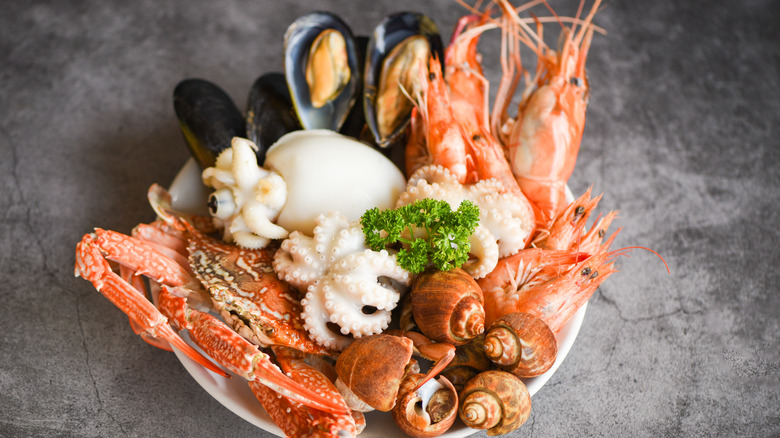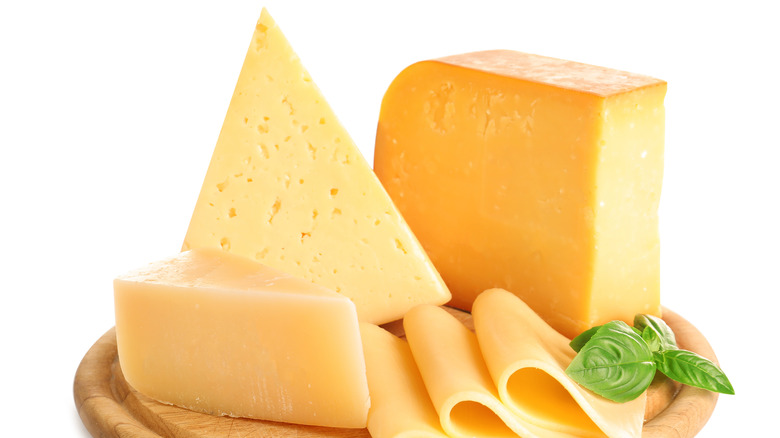Why You Should Think Twice About Mixing Seafood And Cheese
Contrary to popular opinion, not everything is better when covered in mouthwatering melted cheese. This is particularly the case when it comes to seafood, says the Smithsonian, since the fishy food group is hallmarked by lighter flavor than, say, the average hamburger. As a result, drowning a tilapia filet in certain types of cheese will also drown out the taste of the fish itself.
This is especially the case for the stronger, aged cheeses, like cheddar, gouda, Parmigiano-Reggiano, and Gruyère. Aged cheeses are easy to spot because they're harder in texture than their counterparts, per igourmet. The reason they get sharper in taste over time is that cheese moisture levels go down the older it gets, according to the Smithsonian. So, the older the cheese, the less likely it is to pair well with fish, but the more delicious it is to nosh on its own or with some crunchy crackers.
Specifics of seafood flavoring
Some types of seafood can be incredible with the right type and distribution of cheese. Cream cheese and lox are a fan favorite, and the French favorite lobster Thermidor gets its flavor from Gruyère. However, extra-delicate seafood selections like oysters, clams, flounder, and haddock should never be adorned with any sort of cheese, the Smithsonian maintains. Indeed, all they really need for flavor is a bit of lemon juice, peppercorns, and/or possibly another light seasoning. At least, if you want to maintain the seafood's integrity.
Of course, this unwritten rule of thumb could just be due to simple geography. The cheese producing regions of Italy are inland, therefore the people that live there didn't always have access to fresh seafood. As a result, they developed recipes without the ocean's finest in mind. Since we're firmly entrenched in a time period that applauds culinary experimentation, however, this could all change at a moment's notice. Let's hope it's all for the better, or else the Italians might make fun of us.

